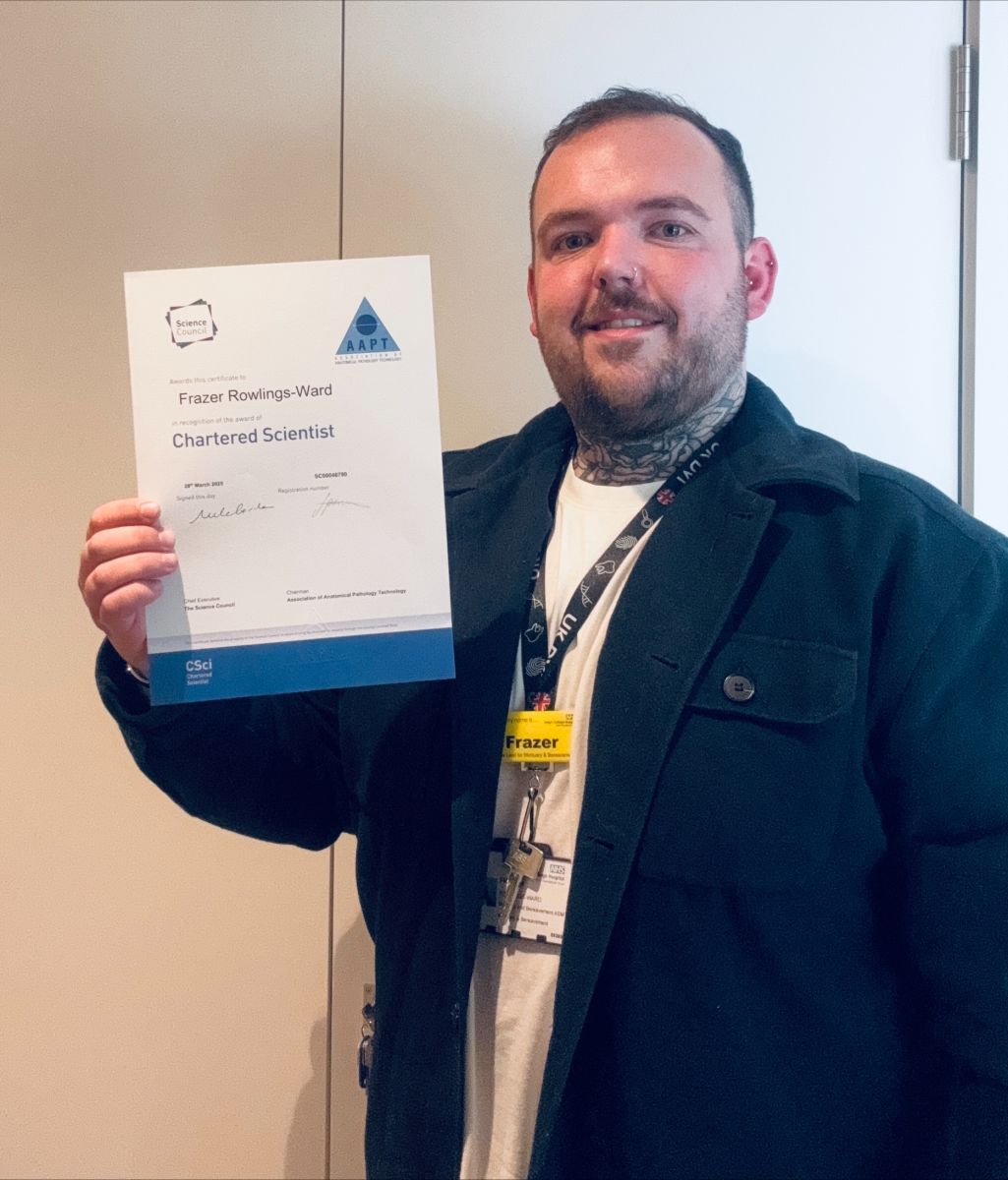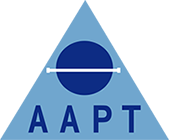News
Q&A: Pursuing Chartered Scientist (CSci) Status with AAPT Support
Frazer Rowlings-Ward CSci MAAPT discussed his path to Chartered Scientist with the Science Council and AAPT

What motivated you to pursue Chartered Scientist (CSci) status, and how did the AAPT support your decision?
Achieving CSci status was driven by my desire to elevate the professional recognition of Anatomical Pathology Technologists (APTs). Registration underscores our expertise and validates the contributions we make in healthcare. The challenges of managing mortuary operations during COVID-19 further reinforced my commitment—maintaining high standards of care amid unprecedented pressures highlighted the importance of our role.
The AAPT’s advocacy for professional registration resonated deeply with me. Their vision of accountability and excellence aligns with my belief that APTs deserve recognition as skilled, dedicated practitioners. Additionally, the AAPT connected me with peers who had successfully attained CSci status, offering invaluable guidance through webinars and networking opportunities. Their resources, including eligibility criteria and CPD platforms, streamlined my preparation and reinforced my resolve to apply.
Walk us through your application process—key steps, timelines, and organization strategies.
The CSci application required thorough reflection on my career trajectory, from trainee to manager. I began by bullet-pointing key achievements, such as leading COVID-19 research projects, departmental improvements, and staff training initiatives. For each competency question (e.g., “Exercise sound judgment in complex situations”), I drafted examples, ensuring clarity and avoiding repetition.
Organising evidence—diplomas, certifications, and an updated CV—was critical. I dedicated time to drafting responses offline, refining them to meet the Science Council’s criteria. The process took several months, emphasizing the need for meticulous planning and self-review.
What evidence did you prioritize to demonstrate competence?
I focused on:
-
Formal qualifications: APT qualifications and DVI training certifications.
-
Professional involvement: Research projects, HTA compliance, and mentorship programs.
-
Leadership: Documentation of departmental improvements and staff development during COVID-19.
Were there specific Science Council criteria requiring extra preparation?
The equivalence report demanded deeper reflection. I expanded on pandemic-related challenges, such as adapting mortuary protocols and leading CT scanning initiatives. Highlighting these examples underscored my problem-solving skills and ethical practice.
How did the AAPT assist during registration?
The AAPT provided structure through clear eligibility guidelines, webinars, and peer connections. While I didn’t receive direct feedback on my application, their resources—such as the CPDMe platform—ensured I met requirements. Networking at annual events and via social groups also offered moral support.
Did AAPT membership streamline your path to CSci?
Absolutely. Membership clarified prerequisites (e.g., Fellowship status, qualifications) and connected me to a community of professionals. The AAPT’s partnership with the Science Council simplified the application pathway, emphasizing their role in advancing APT recognition.
What challenges did you face, and how were they addressed?
Translating years of experience into a structured application was initially daunting! Breaking tasks into bullet points and timelines helped organise my thoughts. Balancing this with work commitments required treating the application as a personal project, driven by pride in my professional journey.
Any surprises during the process?
The self-reflection component was unexpectedly rewarding. Revisiting milestones—from bench-marking projects to mentoring—reignited my passion for the profession. It felt less like an application and more like a celebration of growth.
How has CSci status impacted your career?
CSci has opened doors to leadership roles, including positions on the AAPT Council and assessor roles for the Level 3 Diploma. As a Service Lead, it reinforces my credibility and inspires junior staff to pursue professional development. Networking opportunities have expanded, fostering collaborations beyond my trust.
How do you approach CPD differently as a CSci?
I prioritise diverse learning opportunities and encourage my team to do the same. Platforms like CPDMe simplify tracking, ensuring we meet evolving standards. CPD is now a strategic tool, not just a requirement—enhancing both personal growth and departmental excellence.
Final thoughts for aspiring CSci applicants?
The journey is a testament to your dedication. Leverage AAPT resources, embrace the reflective process, and take pride in showcasing your impact. CSci isn’t just a title—it’s a milestone that amplifies our profession’s value and your role within it.
